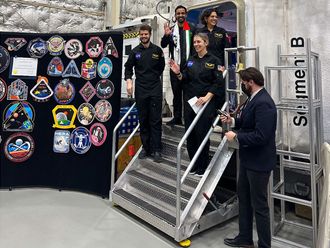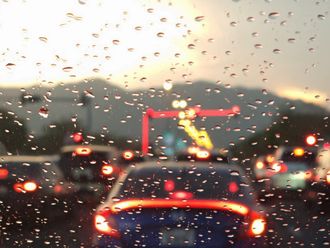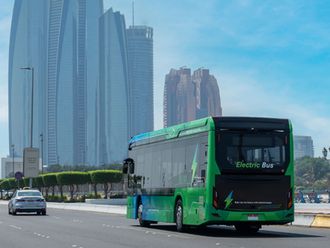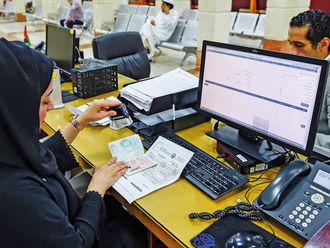
Dubai: After the historic first Arab spacewalk and a successful relocation of a spacecraft on the International Space Station (ISS), UAE astronaut Sultan Al Neyadi has shared the wonder of how water moves in space in his latest social media post.
The Emirati astronaut, who is currently on the longest Arab space mission aboard the ISS, on Friday shared a literally out-of-the-world video of water taking the shape of a blob onboard the space station. In the video captioned ‘See how water forms in space’, Al Neyadi can be seen squeezing water out of a pouch using a straw.
Because there is no gravity to hold liquids in position in the orbital laboratory, water takes different shapes onboard ISS.
In the video, water first takes a spherical shape and Al Neyadi can be seen grasping the big water blob with his hand.
As it wraps around his palm, Al Neyadi bursts the water bubble using a cloth napkin.
read more
- Video: UAE astronaut Sultan Al Neyadi becomes first person to practise jiu-jitsu on International Space Station
- Look: UAE astronaut Sultan Al Neyadi shares breathtaking ‘starry’ view of Dubai from space
- Watch: UAE astronaut Sultan Al Neyadi shares ‘surreal’ time-lapse of his historic spacewalk
- Watch: Dragon Spacecraft with Al Neyadi successfully docks with Harmony's forward port
- UAE astronaut Sultan Al Neyadi has date with ‘Destiny’ for life support on International Space Station
Precious resource
Earlier on March 31, Al Neyadi had shared a post that revealed how precious a resource water is in space.
“It is used to create clean air by separating oxygen from hydrogen, and it is also recycled to provide a continuous supply of clean water,” he had stated while sharing some images of him working on a water recycling tank.
“In these photos, I’m working on the tank that recycles water, while wearing a PPE kit to prevent contamination. Ensuring a well-maintained life support system is a key task for astronauts, particularly during long-duration missions,” Al Neyadi had added.
Water from sweat, urine
Up to 80 per cent of the water on the International Space Station is recycled.
“Astronauts living and working 400 km above our planet might prefer not to think about it, but the water they drink is recycled from their colleague’s sweat and exhaled breath – collected as condensation on the Space Station’s walls,” said the European Space Agency.
Astronauts wash themselves only with wet-wipes for six months and often list a shower as the one of the things they miss most from Earth, according to the agency.
Meanwhile, US space agency NASA said Al Neyadi’s Exploration 69 crew members recently worked on the JEM Water Recovery System (JWRS).
On Thursday, water samples were taken from the JWRS processed water bag and stowed in the Water Return kit.
“The demonstration of JWRS generates potable water from urine. In the past, urine and wastewater were collected and stored, or vented overboard. However, for long-term space missions, water supply could become a limiting factor. Demonstrating the function of this water recovery system on orbit contributes to updating the Environmental Control and Life Support System (ECLSS) to support astronauts on the space station and future exploration missions,” NASA added.
Explaining about the Urine Processor Assembly, part of the Water Recovery System, Layne Carter, ISS Water Subsystem Manager at Marshall Space Flight Center, had said in 2021 that the system was designed for 85 per cent water recovery from crew urine and had been improved over the previous year to recover 87 per cent because of analysis that showed there was still a margin against calcium sulfate precipitation.
“That distillate is combined with the condensate and processed through the Water Processing Assembly (WPA), which recovers 100 per cent of the water it processes. As a result, our overall water recovery is about 93.5 per cent,” Carter had stated back then.
Though ISS relies on water recycling, additional shipments of water from Earth are provided during mission resupply to ensure that astronauts have access to clean water.












